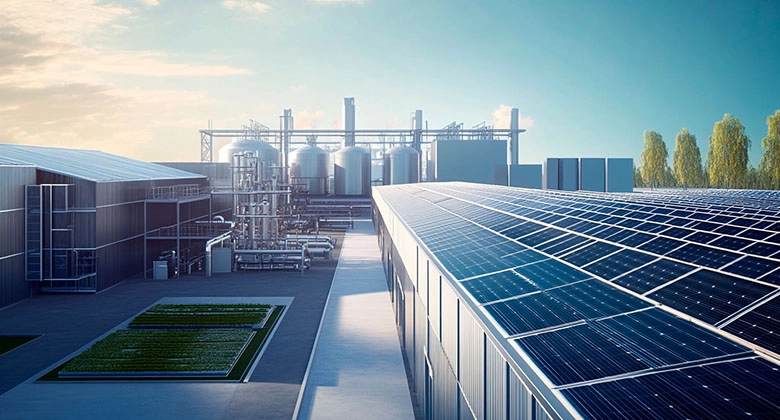

A new manufacturing reality — clean, certified, and efficient
Modern businesses in Ukraine are increasingly focused not only on profits but also on their environmental reputation. This isn’t just a passing trend — it’s a new business norm shaped by global standards. To stay competitive on international markets, production facilities must demonstrate environmental responsibility. One of the most effective ways to do this is by integrating solar energy.
A great example of this is the growing number of projects in regions where companies strive to meet ISO 14001, LEED, BREEAM, and other standards. In this context, a low-cost solar power plant in Vinnytsia for manufacturing enterprises is more than a profitable investment — it’s a strategic move toward green certification.
Why solar energy is the key to certification
Green certification systems include a wide range of requirements, but one of the most important is reducing carbon emissions. Switching from fossil fuels to renewable sources has a direct impact on a facility’s environmental score.
Solar panels make it possible to:
- reduce reliance on carbon-intensive energy;
- lower CO₂ emissions;
- demonstrate a responsible approach to resource use;
- earn additional points in certification evaluations.
They also provide energy independence and stability in the face of fluctuating electricity prices.
Investing in the sun: certification as a valuable bonus
When a business chooses to invest in solar energy, it gains more than just savings on electricity. It also unlocks a powerful marketing and branding tool. Production sites covered in solar panels instantly earn trust, especially from international partners.
One notable case is a food processing plant in Zhytomyr. Its ability to obtain international green certification was largely due to its solar generation system. The project cost was a wise investment, especially considering the long-term return and reputational value. After all, a 1 MW solar power plant and turnkey price in Zhytomyr isn’t just a number — it’s a step toward a more responsible future.
What else should manufacturers consider?
If you're aiming for green certification, a solar energy system is only one component of a broader strategy. Modernizing lighting systems, waste management, ventilation, and water purification is equally important. Still, solar power often makes the most significant contribution to a facility’s green footprint.
Key points to consider:
- Your current energy consumption (this determines the needed capacity).
- Available space for panel installation (roof, façade, or open land).
- Scalability options for future growth.
In addition, both state and international programs in Ukraine support the transition to renewable energy. Grants and preferential terms are available for those who commit to sustainable development.
Sustainability is not a cost — it’s a value
A production facility powered by solar energy already has an advantage in tenders and in the eyes of eco-conscious consumers. This is especially true in Europe, where green certifications are increasingly required. The real question isn’t how much the system costs — it’s how to choose a solar power plant of 100, 300, or 500 kW that aligns with your long-term goals.
Because investing in solar energy isn’t just about light. It’s about the future. It’s about trust. And it’s about responsibility to the planet.

